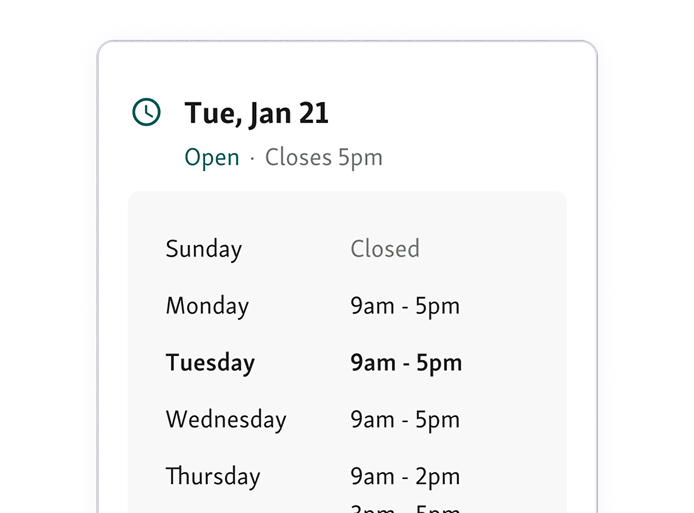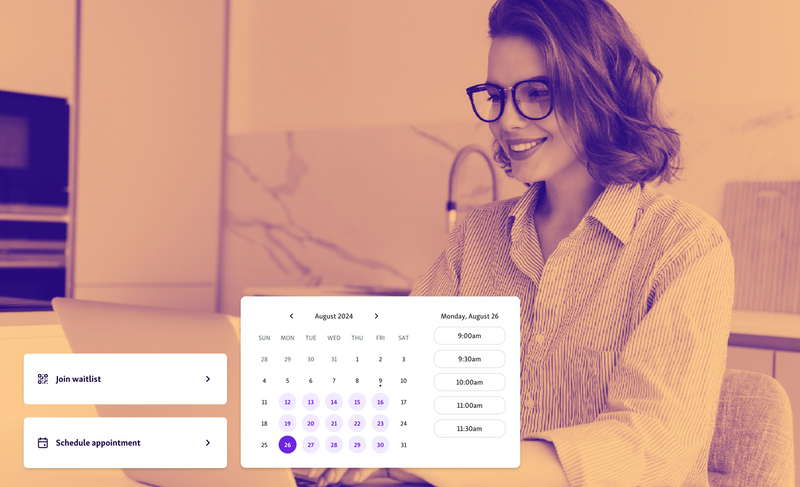Government office websites are the first stop for citizens hunting for information or services. Need to renew a license? Check office hours? Book an appointment? Visitors want clear details they can trust.
When your government site is easy to navigate and uses plain language, confusion drops. Citizens finish tasks without making unnecessary calls or visits. You save time for the public and your staff stops answering the same questions over and over.
In this guide, we’ll look at what website visitors expect from a government office website and highlight the key information that should always be included to improve satisfaction and service delivery.
What Visitors Expect on Government Office Websites
Government office websites set the tone for visitor experience. People expect quick access to clear, reliable details that help them plan their visit with ease. Here’s what visitors expect:
1. Service Listings and Descriptions
Website visitors want a clear overview of what services your government office provides. They need to know immediately if they're in the right place and what they can do online. Common services include:
Applying for or renewing licenses and ID cards
Getting permits for businesses, housing, or events
Finding public records or certificates
Each service needs a short description in plain language. Tell them who it's for and what they need to start. Keep it brief - long explanations confuse people and waste everyone's time.
2. Hours and Location Details
When planning a visit to a government office, people want quick access to basic details. Office hours and holiday schedules are often the first things they check, followed by clear location information.

Visitors also expect directions they can use in GPS, along with parking or transit options to make the trip easier. Just as important, a reliable phone number or email helps them confirm details before heading out.
3. Online Service Options
Visitors often expect government office websites to provide online alternatives that save them time and unnecessary trips. Popular options include:
Renewing or replacing driver’s licenses and ID cards
Submitting applications for permits or certificates
Accessing DMV online services and other digital forms
The benefits of these digital tools are clear: shorter wait times, fewer queues at the office, and more flexibility for citizens to complete tasks on their own schedule.
4. Appointment Booking Options
Visitors don’t want to waste time waiting in line, so many look for clear details on whether appointments are required or available. They also expect an easy way to reserve a slot and get a sense of how long they might have to wait. Common features people look for include:
Simple booking links or online appointment scheduling tools
Email or SMS confirmations after booking
Updates on estimated wait times before arriving

When these options are visible, website visitors feel more in control of their schedule and more confident about their upcoming visit.
You might also like - How Appointment Scheduling Systems Enhance Customer Experience in Government Services
Key Information to Include for Better Visitor Experience
Clear, accessible information helps visitors feel prepared and confident. By outlining key details upfront, offices can reduce confusion and improve service flow. Let’s look at key information that you can include:
1. Eligibility and Documentation Requirements
Visitors first look for clear guidance on who qualifies for a service and what documents to bring. Missing paperwork or misunderstanding eligibility causes wasted trips, longer lines, and frustration all around. Set expectations upfront and offices run smoother.
Proof of age or residency (ID card, utility bill)
Required documents for each service - passports, certificates, tax forms
Clear notes about originals vs. copies
Eligibility rules based on age, family status, or citizenship
Someone booking an appointment for a marriage license needs to see the minimum age requirement and what documents to bring. With an online visit planner or remote check-in, they prepare ahead, arrive ready, and don't slow down the queue.
2. Fees and Payment Methods
Visitors want to know in advance how much a service will cost and how they can pay. Unclear fee details or limited payment options often lead to frustration at the counter and slow down the line. Displaying this information clearly ensures citizens arrive prepared and transactions move quickly.
Standard fees for each service, such as licenses, permits, or certificates
Accepted payment methods, including cash, debit, credit, or online options
Notes on additional charges for expedited services or replacements
For example, a visitor renewing a vehicle registration online would expect to see the exact fee and whether card payments are accepted. When paired with features like SMS notifications confirming payment or branded online forms, the entire process feels smoother and more reliable.
3. Accessibility and Special Services
Visitors also expect government offices websites to clearly outline accessibility options and any special services available. This information reassures citizens that their needs will be met and helps them plan their visit with confidence. Offices that highlight these details not only reduce confusion but also show they are committed to inclusivity.
Accessibility features like ramps, elevators, or priority counters
Language support through multilingual apps or translation services
Services tailored for seniors, veterans, or other groups with unique needs
Remote check-in or flexible appointment flows for those needing extra support
For example, a veteran scheduling a benefits appointment would want to know if priority service is offered and whether staff can assist with forms. With multilingual apps or custom service flows in place, these expectations are met without slowing down operations.
4. Contact Channels and Support
When questions come up, visitors expect multiple ways to reach a government office quickly. Easy-to-find contact options build trust and reduce the need for in-person visits. Offering different channels ensures that citizens with varying preferences and comfort levels can get the help they need.
Direct phone numbers and official email addresses
Live chat or online support tools for quick responses
Links to social media pages for updates and alerts
FAQs that answer common questions without staff intervention
For example, a citizen unsure about which documents to bring for a permit could check the FAQ section or use live chat to confirm. With integrated support tools and clear service alerts, fewer calls clog phone lines and staff can focus on serving visitors efficiently.
5. Real-Time Updates
Visitors need government websites to give them updates that prevent wasted trips or confusion. Clear notices about closures, delays, or policy changes keep people in the loop and make them trust the service more. Special events, community programs, or service disruptions? People want to know about those too.
Office closes for holidays, bad weather, or emergencies
Hours change or services become unavailable
Policies or regulations shift for certain services
Community events or special programs pop up
Picture this: a DMV branch shuts early due to a storm. Citizens check the website, get a real-time SMS reminder before heading out, and stay home. The public stays informed. Service counters don't get mobbed by angry people who drove there for nothing.
Helpful read - How to Improve Customer Communication With SMS Text Messaging
How a Visitor Website Improves Queue Management
A visitor website is more than a landing page, it acts as a remote front desk that helps people manage their visit before they even step inside. It’s a simple way to cut wait times and keep queues moving.
Here’s what it offers:
Join a virtual waitlist from anywhere, cutting down on physical lines
Book appointments online and receive instant confirmation
Check visit status in real time and see when it’s their turn
Get SMS updates about delays, closures, or queue changes
See key info at a glance like opening hours, directions, and contact details
Multilingual support to reduce confusion for diverse visitors
Tools like Qminder make this possible by combining queue management, real-time visitor updates, and customizable visitor websites into one seamless system.
Build Visitor-Friendly Government Websites That Deliver
Government office websites shape citizen interactions with services. Clear information about hours, fees, and eligibility helps website visitors find what they need.
Confusion drops and satisfaction goes up. Real-time updates, interactive tools, and feedback forms make the online experience stronger.
Website visitor tracking shows offices what citizens actually need so they can keep improving services. Qminder provides the ideal platform for government offices with visitor tracking tools, real-time updates, and seamless appointment booking.
Book a demo with Qminder today and transform your public service experience.
Yes. Visitor websites are built to support large volumes of traffic, ensuring that even during peak hours, like tax season or license renewal periods, citizens can still access services without delays.
Most visitor websites connect seamlessly with scheduling, queue management, and communication tools. This allows offices to sync visitor data, appointments, and updates without extra manual work.
Visitor websites follow strict compliance standards like SOC 2, HIPAA, and GDPR. Sensitive data is encrypted, and customizable retention settings allow offices to automatically remove personal information after a set time.






